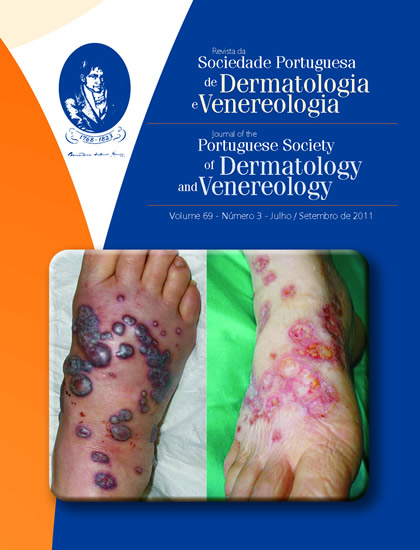STEVENS-JOHNSON SYNDROME AND TOXIC EPIDERMAL NECROLYSIS – A 10-YEAR STUDY
Abstract
Stevens-Johnson syndrome (SJS) and Toxic Epidermal Necrolysis (TEN) are uncommon mucocutaneous der- matosis with a potentially fatal outcome, mostly secondary to drug administration. The aim of this retrospective study was to evaluate the clinical and evolutive characteristics of the patients with SJS and TEN admitted to the Dermatology Department of Coimbra University Hospital, between June/2000 and June/2010. 38 patients (27 women and 11 men) were included, with a mean age of 58.5 years (±21,63 years, 14-88 years), 26 with SSJ, 4 with SJS-TEN overlap and 8 with TEN. Involve- ment of oral, ocular and genitalia mucous membranes were present in 35, 30 and 13 patients respectively, with involvement of at least two in 31 patients. Drugs were the causative factors in 81.6% of patients: allopurinol in 36%, antibiotics in 23%, anticonvulsants in 19% and nonsteroidal anti-inflammatory drugs in 10%. The mortality rate was 8.3% for SJS and 37.5% for TEN. There was a significant correlation between the fatal outcome and a state of immunosuppression, presence of me- tabolic acidosis and involvement of the genital mucosa. The reasonable and rational use of drugs is of crucial importance, particularly allopurinol, the most likely causative factor, in 29% of total, and present in 40% of patients with a fatal outcome.
KEYWORDS – Stevens-Johnson Syndrome; Epidermal Necrolysis, Toxic; Allopurinol; Drug Eruptions; Pharmaceutical Preparations/Adverse Effects.
Downloads
All articles in this journal are Open Access under the Creative Commons Attribution-NonCommercial 4.0 International License (CC BY-NC 4.0).








